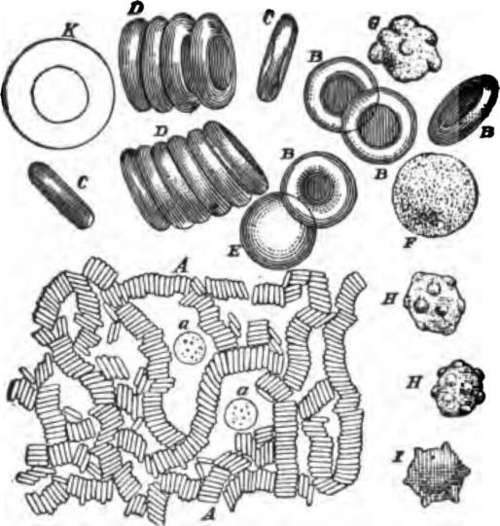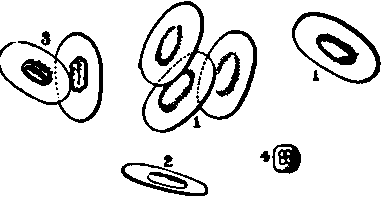The Blood
Description
This section is from the book "The Human Body: An Elementary Text-Book Of Anatomy, Physiology, And Hygiene", by H. Newell Martin. Also available from Amazon: The Human Body.
The Blood
The Blood, as every one knows, is a red liquid which is very widely distributed over the body, since it flows from any part of the surface when the skin is cut through. There are very few portions of the body into which blood is not carried. One of them is the outer layer of the skin;* hairs and nails, the hard parts of the teeth and most cartilages also contain no blood; these non-vascular tissues are:
Where does the blood receive nutritive matters? Oxygen? What does it do with them?
What part does the blood play in the removal of wastes?
State briefly the functions of the blood with reference to the nutritive processes of the body.
What is blood? How do we know that it is widely distributed? Name parts into which blood does not flow. How are the non-vascular tissues nourished?
* The absence of blood in the superficial layer of the skin may be readily shown: take a fine needle threaded with silk; by taking shallow stitches a pattern can be easily embroidered on the palm or back of the hand without draw tag a drop of blood, nourished by liquid which soaks through the walls of blood-vessels in neighboring parts.
The Histology Of Blood
Fresh blood is to the unassisted eye a red opaque liquid showing no sign of being made up of different parts; but when examined by a microscope it is seen to consist of a liquid, the blood-plasma, which has floating in it countless multitudes of closely crowded and extremely minute solid bodies known as blood-corpuscles. The liquid is colorless and watery-looking; the corpuscles are of two kinds, red and colorless. The red corpuscles are the kinds of blood-corpuscles by far the most numerous and give the blood its color; they are so tiny and so plentiful that about five millions of them are contained in one small drop of blood. They are so closely packed that the unaided eye cannot see the spaces between them, and so the whole blood appears uniformly red.

Fig. 53. Blood-corpuscles. A, magnified about 400 diameters. The red corpuscles have arranged themselves in rouleaux; a,a, colorless corpuscles; B. red corpuscles more magnified and seen in focus; E, a red corpuscle slightly out of focus. Near the right-hand top corner is a red corpuscle seen in three quarter face, and at C one seen edgewise. F, G, H, I, white corpuscles highly magnified.
Describe the appearance of fresh drawn blood. What is seen when a drop is examined with a microscope? Describe the blood-plasma Name.

Fig. 54. Red corpuscles of the Frog.
Continue to:
